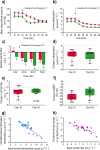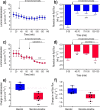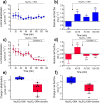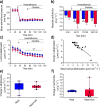Effects of α2-adrenoceptor stimulation on luminal alkalinisation and net fluid flux in rat duodenum
- PMID: 36006975
- PMCID: PMC9409570
- DOI: 10.1371/journal.pone.0273208
Effects of α2-adrenoceptor stimulation on luminal alkalinisation and net fluid flux in rat duodenum
Abstract
The sympathetic nervous system is highly involved in the regulation of gastrointestinal functions such as luminal alkalinisation and fluid absorption. However, the exact mechanisms are not clear. This study aimed to delineate how α2-adrenergic receptor stimulation reduces duodenal luminal alkalinisation and induces net fluid absorption. This was tested by perfusing the duodenum of anesthetized rats with isotonic solutions devoid of Cl- and/or Na+, in the absence and presence of the α2-adrenoceptor agonist clonidine. The clonidine was also studied in rats treated with dimethylamiloride (a Na+/H+ exchange inhibitor), vasoactive intestinal peptide, and the nicotinic receptor antagonist hexamethonium. Clonidine reduced luminal alkalinisation and induced net fluid absorption. The Cl--free solution decreased luminal alkalinisation and abolished net fluid absorption, but did not prevent clonidine from doing so. Both the Na+-free solution and luminal dimethylamiloride increased luminal alkalinisation and abolished net fluid absorption, effects counteracted by clonidine. The NaCl-free solution (D-mannitol) did not affect luminal alkalinisation, but reduced net fluid absorption. Clonidine reduced luminal alkalinisation and induced net fluid absorption in rats perfused luminally with mannitol. However, clonidine did not affect the vasoactive intestinal peptide-induced increase in luminal alkalinisation or fluid secretion. Pre-treatment with hexamethonium abolished the effects of clonidine on luminal alkalinisation and net fluid flux. In summary, our in vivo experiments showed that clonidine-induced reduction in luminal alkalinisation and induction of net fluid absorption was unrelated to luminal Na+ and Cl-, or to apical Na+/H+ or Cl-/HCO3- exchangers. Instead, clonidine seems to exert its effects via suppression of nicotinic receptor-activated acetylcholine secretomotor neurons.
Conflict of interest statement
The authors have declared that no competing interests exist.
Figures











Similar articles
-
The ethanol-induced stimulation of rat duodenal mucosal bicarbonate secretion in vivo is critically dependent on luminal Cl-.PLoS One. 2014 Jul 17;9(7):e102654. doi: 10.1371/journal.pone.0102654. eCollection 2014. PLoS One. 2014. PMID: 25033198 Free PMC article.
-
The Impact of α-Adrenoceptors in the Regulation of the Hypotonicity-Induced Increase in Duodenal Mucosal Permeability In Vivo.Pharmaceutics. 2021 Dec 6;13(12):2096. doi: 10.3390/pharmaceutics13122096. Pharmaceutics. 2021. PMID: 34959377 Free PMC article.
-
Modulation of mucosal permeability by vasoactive intestinal peptide or lidocaine affects the adjustment of luminal hypotonicity in rat duodenum.Acta Physiol (Oxf). 2007 Apr;189(4):325-35. doi: 10.1111/j.1748-1716.2006.01649.x. Acta Physiol (Oxf). 2007. PMID: 17367402
-
Fluid absorption by rat lung in situ: pathways for sodium entry in the luminal membrane of alveolar epithelium.J Physiol. 1987 Mar;384:325-45. doi: 10.1113/jphysiol.1987.sp016457. J Physiol. 1987. PMID: 3116209 Free PMC article. Review.
-
Duodenal alkaline secretion: its mechanisms and role in mucosal protection against gastric acid.Dig Liver Dis. 2004 Aug;36(8):505-12. doi: 10.1016/j.dld.2004.03.008. Dig Liver Dis. 2004. PMID: 15334769 Review.
Cited by
-
Evaluation and validation of chemotherapy-specific diarrhoea and histopathology in rats.Basic Clin Pharmacol Toxicol. 2022 Dec;131(6):536-546. doi: 10.1111/bcpt.13790. Epub 2022 Sep 30. Basic Clin Pharmacol Toxicol. 2022. PMID: 36124882 Free PMC article.
References
-
- Schiller LR (2017) Antidiarrheal drug therapy. Current gastroenterology reports 19: 1–12. - PubMed
MeSH terms
Substances
LinkOut - more resources
Full Text Sources

